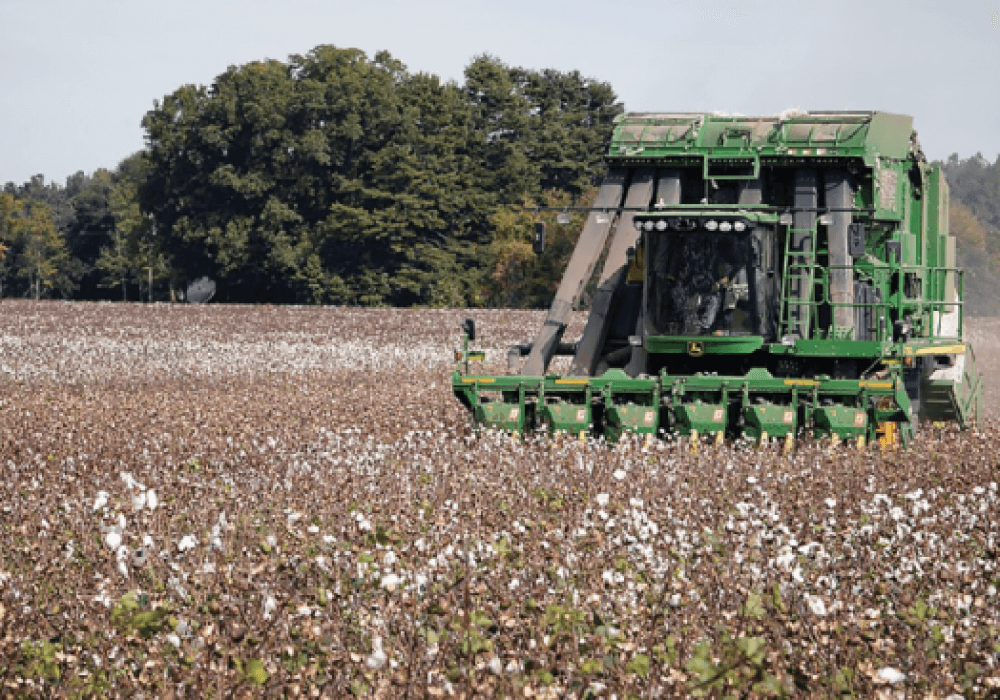
The pesticide, aldicarb, is making a comeback to control insect pests and nematodes in cotton. Registered under the trade name AgLogic® 15G, this new product is expected to equal Temik.
By A. Denise Attaway
Clemson University
Six years after production was discontinued in the United States, aldicarb is making a comeback. Production of the farm chemical aldicarb, formerly sold under the trade name Temik, was discontinued in 2010 and has gradually disappeared from the market. A new product, AgLogic® 15G Aldicarb Pesticide, is making an initial run in Georgia this season. It is expected to be released in other cotton-producing states in 2017 and 2018.
Jeremy Greene, entomologist at the Clemson Edisto Research and Educational Center, says the U.S. cotton crop has suffered with declining availability of aldicarb. Temik was a valued part of many growers’ integrated pest management programs for control of early season insect pests and nematodes. There is little to no Temik 15G available for purchase today.
“Control of thrips and nematodes has been challenging since the availability of aldicarb, or Temik 15G, has diminished,” Greene says. “Temik 15G was on the market for about 40 years and was used on a significant number of cotton acres for control of thrips and nematodes. Aldicarb was very effective.”

The pesticide, aldicarb, is making a comeback to control insect pests and nematodes in cotton. Registered under the trade name AgLogic® 15G, this new product is expected to equal Temik.
Aldicarb Alternatives
Since Temik essentially was taken off the market when the registrant stopped production, cotton growers have been using neonicotinoid seed treatments. Among the active ingredients are imidacloprid (Gaucho ST, also a part of Aeris ST) and thiamethoxam (Cruiser ST, also a part of Avicta Duo ST) for at-plant control of thrips in cotton. This approach has been an improvement in terms of convenience, but it has not been as effective as Temik in controlling thrips.
“Generally, in comparisons of efficacy with Temik and the seed treatments, Temik usually yielded more cotton,” Greene says. “So, some yield decrease likely has occurred overall. Much of this loss likely is due to failure to suppress nematodes. But Temik generally was regarded as the standard for controlling thrips.”
John Mueller, plant pathologist and director of the Edisto REC, agrees and says cotton yields appear to have decreased as nematode populations appear to have increased.
“Growers have been using seed treatments such as the various formulations of Aeris, Avicta and Poncho/Votivo for nematode control,” Mueller says. “Beginning last year, they also began using Velum Total. A small percentage of growers have continued to use Telone II, applying it using a prescription rate application map.”
Nematode Pressure
Southern root-knot nematode was one pest cotton producers worried about when aldicarb was no longer available. In recent years, major seed companies have released cotton varieties resistant to Southern root-knot nematode that can compete yield- wise with the best susceptible lines in nematode-free areas of fields.
“Growers can utilize these cultivars to essentially lower pressure from Southern root-knot nematode and use seed treatments and lower rates of soil-applied nematicides to provide control of other nematodes present,” Mueller says. “In fields with high levels of Columbia lance, sting or reniform nematodes, growers will need to use higher rates of soil-applied nematicides to limit yield losses. This is where AgLogic® 15G will get a lot of consideration for use.”
Certification And Stewardship
AgLogic® 15G is a restricted-use product of Ag Logic Chemical LLC in Chapel Hill, N.C. Its performance is expected to be similar to Temik. It is registered for control of nematodes, thrips, aphids, mites, whiteflies and plant bugs, as well as other chewing and sucking pests, says Antoine Puech, president and CEO of Ag Logic Chemical. It is labeled for use on cotton, peanuts, soybeans, sugarbeets, dry beans and sweet potatoes.
Stephen Cole, director of regulatory and public services at Clemson, says growers who use AgLogic® 15G must be licensed private applicators. Without this certification, growers cannot legally purchase the product from agricultural chemical dealers.
In addition to this certification, anyone who intends to purchase, use or sell AgLogic® 15G must complete an online stewardship certification course administered by Ag Logic Chemical LLC. For more about AgLogic® 15G product registration, visit http://bit.ly/1V9uFcq.